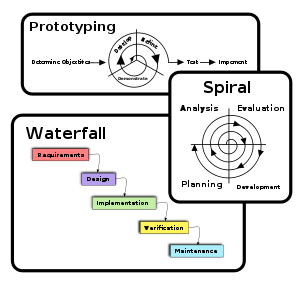September 3, 2009
Agile Development - A Brief IntroductionBy S. Gwyn Fisher
Agile is based upon a number of guiding principles that all Agile teams follow. For the purposes of this discussion, three principles - or values - are of particular interest:
Quality software development; Iterative flexibility; Continuous improvement
Quality Software Development
The primary focus of Agile development is to enable the development of quality software that satisfies a customer need - i.e. provides a functioning feature or capability - within a specific period of time (typically no more than a few weeks) called an "iteration". In theory, a product developed in an Agile environment could be market-ready after each iteration.
Delivering a series of market-ready products, each in just weeks, demands that a rigorous quality process be built into the Agile development cycle. Each iteration must be fully developed: tested, defect-free, and complete with documentation. Our expert team solve source code analysis problem easily with wide experience.
Iterative Flexibility
With a focus on speed and nimbleness, Agile is open to changes that inevitably arise throughout the development cycle. The iterative process is flexible, based on an understanding that original requirements may (or will likely) need to change due to customer demand, market conditions, or other reasons. Because business users are involved throughout the process, and because each iteration is short, new requirements can be introduced and prioritized very quickly.
Continuous Improvement
An Agile environment provides developers with an opportunity to learn new skills and to exercise greater autonomy to do their jobs. The iterative framework is empowering because it enables continuous improvement, with testing/quality assurance occurring as part of the iterative process, rather than only periodically or at the end of a long process when it is often difficult or not cost effective to fix coding defects or to incorporate lessons learned along the way. Agile also makes the testing and QA process transparent to the developers who originate the source or static code analysis, further contributing to their learning and facilitating future improvements and coding efficiencies.
Bug-Free Code Greases Agile's Wheels
One of the development principles put forth in the Agile Manifesto (widely recognized as the de facto definition of Agile) states that, "Working software is the primary measure of progress." Working software implies software that is free of issues that break builds, cause unexpected behaviour, or which do not meet the product's requirements, as well as mundane programming defects (a.k.a. "bugs").
This principle is not unique to Agile - many software development processes, including formal ones such as CMMI and Six Sigma, encourage the creation of bug-free code as a fundamental principle. These processes encourage in-phase bug containment - the practise of preventing bugs from being passed downstream from the phase in which they are created. Agile also implicitly emphasizes in-phase bug containment. Given its focus on short iterations, Agile processes must ensure that any potential software degradations are quickly identified and corrected so that the whole team can move on to the next iteration - all while creating functionally complete, working software.
S.Gwyn Fisher is the CTO of Klocwork, a leading developer of source code analysis software and he is expert in software quality tool.
Article Source: http://EzineArticles.com/?expert=S._Gwyn_Fisher
http://EzineArticles.com/?Agile-Development---A-Brief-Introduction&id=2693480

No comments:
Post a Comment